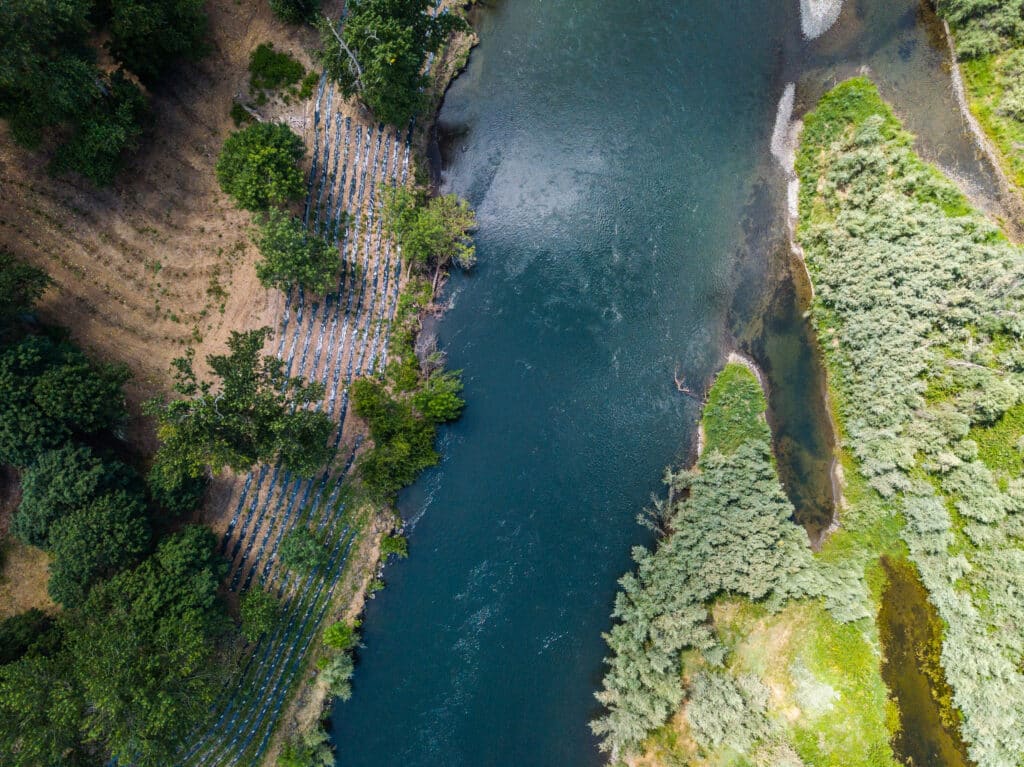50 years past. $2T spent. Where are we now?
October 13, 2022
The Clean Water Act has been in play for 50 years. But more than half of our rivers remain significantly impaired. We must update our conservation funding system.
October marks 50 years since the passage of the Clean Water Act (CWA), which has been a powerful tool for reducing pollution piped directly into waterways. But even after spending $2 trillion to improve water quality, a majority of U.S. waterways are still not drinkable, swimmable, or fishable. Today, the leading source of water quality impacts are distributed nonpoint sources (NPS) of runoff that are not directly regulated under the CWA.
In many ways, the current situation is predictable. Congress passed the CWA to focus on pollution that came from big point sources. Without a similar regulatory “stick,” the best tool available to effectively manage NPS is project money. But NPS funding is fragmented, not implemented with watershed-scale coordination, and even when it’s available, a host of practical and financial barriers make this work hard to fund at scale and speed.

A Watershed Outcomes Strategy
The Freshwater Trust (TFT) believes we must revamp our current funding and implementation framework for water quality conservation, and we’re working with lawmakers to make sure that we can finish the job. The solution is relatively straight-forward: to secure watershed-scale results, we need to bring together currently siloed public funds into a coordinated investment strategy, concentrate that funding in watersheds towards the highest return projects identified using analytics, and simplify transactions so that landowners and projects get paid quickly for producing good outcomes. Using this “watershed outcomes” strategy, money can quickly get to the best projects in a hassle-free way, while driving bigger, better, faster results at scale.
We’re working hard at the federal, state, and local level to implement this framework:
- Watershed Results Act: Introduced by Senator Wyden in 2021, the Watershed Results Act (S. 3539) would establish an “Outcomes Fund” at the Department of Interior, with $15M/year/pilot (for six years) available in two to five pilot watersheds to directly purchase the best project outcomes. WRA investments would be prioritized using watershed analytics, with a coordinated funding plan and other key efficiencies to simplify results, and expand the funding pool. The WRA received subcommittee support this summer and we are continuing conversations to move the bill forward.
- A New EPA & TFT Led Group: After releasing a memo highlighting the severity of nutrient overload in many freshwater ecosystems, EPA leadership approved the Watershed Nutrient Reduction Bank Discussion Group. Co-organized and led by EPA and TFT, and including multiple national outcomes-focused experts, the group had its first meeting in September, and has been tasked with developing and piloting a new model for accelerating and scaling integrated watershed solutions to help EPA better address the NPS nutrient challenge. Group members will focus on overcoming the practical, social, and financial barriers that currently inhibit a comprehensive nonpoint funding and implementation framework.
- Securing California Funds: As part of California’s recent budget surplus negotiations, TFT closely supported our partner, Conservation Strategy Group, to secure funds in California’s Budget Act of 2022 (AB 179 and AB 211) to help bolster and enhance California’s integrated regional watershed management program. The State committed to provide $150.5M over four years to the California Department of Water Resources for grants to complete watershed climate risk assessments, and to implement verifiable (e.g., quantifiable and measurable) resilience project investment in priority areas.
- A Coordinated Coalition: TFT is working with a coalition of agricultural and environmental partners to develop outcomes-based funding authorizations and appropriations in the 2023 federal Farm Bill, including a likely focus on developing a pilot watershed program that would aim to deliver coordinated, streamlined, and enhanced funding to the best projects identified by watershed analytics in water-stressed Western watersheds.
- Meeting Clean Water Act Permit Limits: At the local/regional level, TFT continues to support utilities with watershed outcomes-based restoration solutions to meet CWA permit limits. TFT is currently working with King County (WA) to help develop a nutrient compliance solution for the Puget Sound that ensures the billions of dollars soon to be spent there are properly balanced between treatment technology at wastewater plants and critical NPS projects around the Sound. TFT is also finalizing a $9.5M water quality trading program contract with the Metropolitan Wastewater Management Commission (OR) to implement riparian shade projects to shade the river and provide habitat. TFT completed a similar program for City of Medford (OR) in 2020, is implementing a shade program for the City of Ashland (OR), and continues to support the Idaho Power Company in implementing its $350M water temperature compliance program. TFT is currently working to determine if a similar watershed outcomes-driven approach can be added to federal hydropower dam CWA permits on the Lower Columbia River, which could help drive large-scale restoration of key cold-water tributaries.
#Clean Water Act #conservation finance #policy #quantified conservation #watersheds
